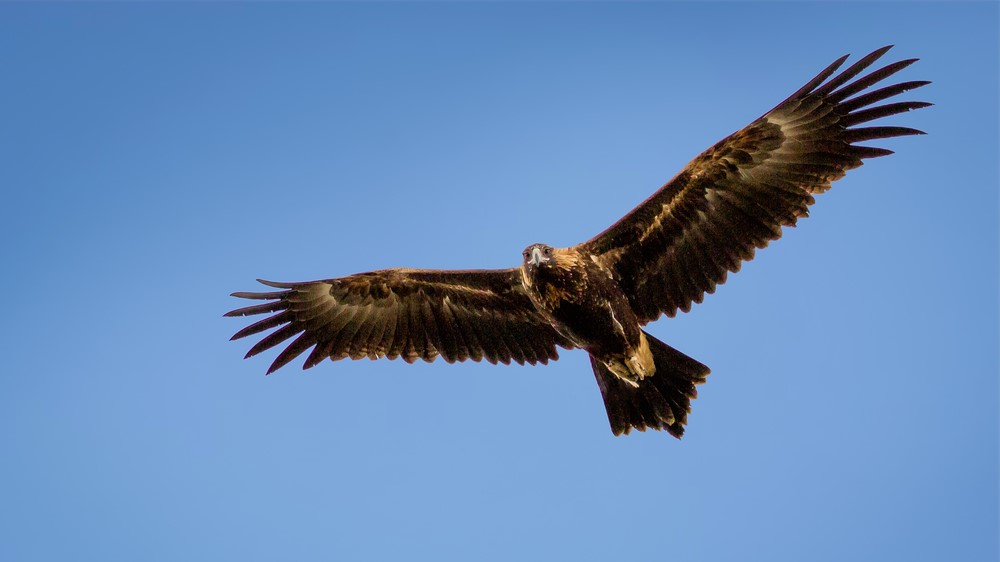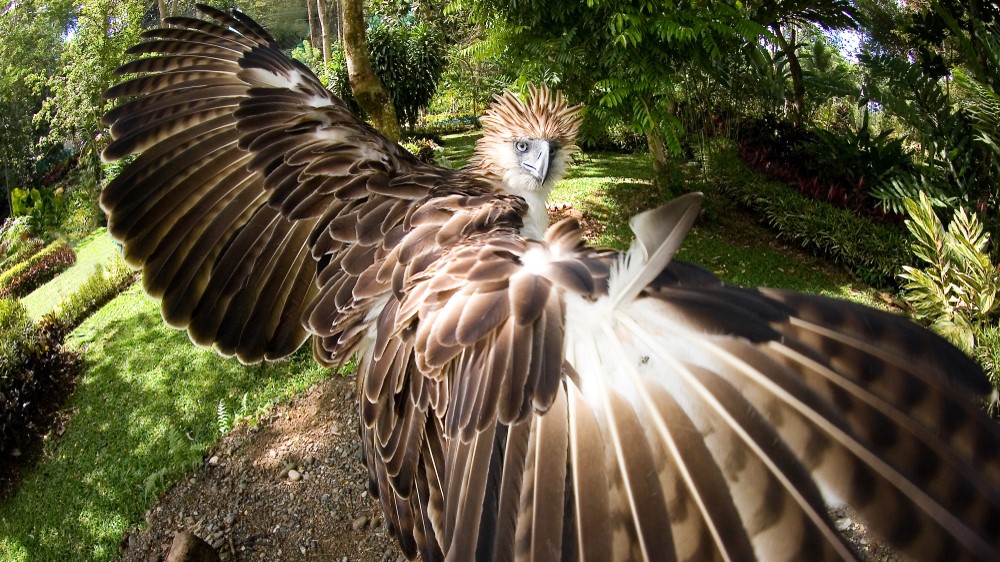Extinct 'Lord of The Rings' eagles had a 10-foot wingspan and probably could have carried a hobbit
Fossils uncovered in Australia belong to a newfound species of extinct eagle that was big enough to pick up hobbit-size prey, like the fictional giant eagles in "The Lord of the Rings."

An ancient hulk of an eagle that once soared over Australia shares similarities with the fictional giant eagles from J. R. R. Tolkien's fantasy epic "The Lord of the Rings," a new study on the extinct raptors shows. While the real-life giants weren't as enormous as their fictional counterparts (and almost definitely couldn't be ridden by a wizard), they were probably hefty enough to pick up hobbit-size prey with their colossal talons.
The newfound species, named Gaff's powerful eagle (Dynatoaetus gaffae), was described from a collection of fossils found between 1959 and 2021 in a 56-foot-deep (17 meters) vertical cave in the state of South Australia. The bones, which include wings, legs, talons, a breastbone and a skull, reveal that the giant bird likely had talons measuring around 12 inches (30 centimeters) long and a wingspan of around 10 feet (3 meters), which makes it Australia's largest bird of prey on record, researchers wrote in a new study published March 15 in the Journal of Ornithology.
"It was humongous," study co-author Trevor Worthy, a vertebrate paleontologist at Flinders University in Australia, said in a statement. It lived between 50,000 and 700,000 years ago and was likely the largest eagle on the planet at the time, he added.
During the eagle's reign, Australia was filled with other giant creatures, including large flightless birds, giant kangaroos (Procoptodon sp.), massive monitor lizards (Varanus priscus) and bear-like marsupials (Diprotodon optatum). Researchers believe that D. gaffae could have preyed upon the infants or small and sickly individuals from these giant species. These prey could have been as large as living kangaroos, such as western gray kangaroos (Macropus fuliginosus), which grow to be around 4.3 feet (1.3 m) tall. (For context, hobbits stood between 3 and 4 feet (0.9 to 1.2 m) tall, according to "The Lord of the Rings" books.)
Related: 10 stunning fossils from 2022 that didn't come from dinosaurs

Despite its extraordinary size, D. gaffae was nowhere near as large as the giant eagles from "The Lord of the Rings," which had a wingspan of up to 75 feet (23 m) in the films by Peter Jackson, according to Wiki Fandom. However, D. gaffae was more than twice the size of Australia's wedge-tailed eagle (Aquila audax), which is alive today and likely co-existed with D. gaffae before the larger eagle species went extinct.
D. gaffae has a similar body shape to living eagles in the genus Spilornis, which includes six species living in Asia; the largest of these, the Philippine eagle (Pithecophaga jefferyi), preys upon monkeys, lemurs and bats, as well as juvenile pigs and deer. D. gaffae and P. jefferyi both have large and powerful legs for their size, enabling them to attack and carry away large prey, study lead author Ellen Mather, a doctoral candidate of paleontology at Flinders University, wrote in an article for Australasian Science.
Sign up for the Live Science daily newsletter now
Get the world’s most fascinating discoveries delivered straight to your inbox.
Only two known species of extinct eagle were larger than D. gaffae: Gigantohierax suarezi, which hunted giant rodents in Cuba, and New Zealand's giant Haasts eagle (Hieraaetus moorei), which plunged headfirst into dead prey to eat the organs. Both of these species had wingspans similar to D. gaffae but were likely heavier.
D. gaffae is not the only ancient eagle that has been discovered in Australia in recent years. In 2021, researchers revealed Archaehierax sylvestris, a previously unknown species that likely hunted large koalas around 25 million years ago.

Harry is a U.K.-based senior staff writer at Live Science. He studied marine biology at the University of Exeter before training to become a journalist. He covers a wide range of topics including space exploration, planetary science, space weather, climate change, animal behavior and paleontology. His recent work on the solar maximum won "best space submission" at the 2024 Aerospace Media Awards and was shortlisted in the "top scoop" category at the NCTJ Awards for Excellence in 2023. He also writes Live Science's weekly Earth from space series.










